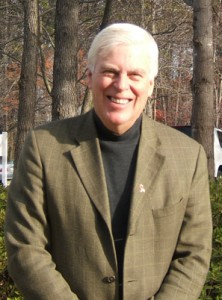NSU Newsroom
SharkBytes
Horizons
This version of NSU News has been archived as of February 28, 2019. To search through archived articles, visit nova.edu/search. To access the new version of NSU News, visit news.nova.edu.
This version of SharkBytes has been archived as of February 28, 2019. To search through archived articles, visit nova.edu/search. To access the new version of SharkBytes, visit sharkbytes.nova.edu.
NSU Research Spotlight: Halmos College Professor Presents AIDS Research Findings to NSU Pharmacy Doctoral Students
Stephen O’Brien, Ph.D., professor in the Halmos College of Natural Sciences and Oceanography, recently led a graduate seminar lecture called “CURE: A Science-Based Magic Bullet” for the NSU College of Pharmacy. The lecture covered the early days of the AIDS epidemic through our modern-day understanding of the disease, with a focus on the critical importance of the CCR5 receptor on CD4 positive white blood cells as the entry vehicle for HIV-1, the virus that causes AIDS.
O’Brien described his discovery that the CCR5 receptor is the route of entry of HIV-1 into CD4+ cells, as well as other genetic risk factors for susceptibility to AIDS after HIV-1 infection. He explained how he collected genomic information from many cohorts of individuals at high risk of contracting AIDS with the hope of finding genetic characteristics that might identify the mechanisms whereby HIV-1 was able to destroy CD4 positive cells and cause AIDS.
On July 4, 1996, O’Brien’s lab identified a mutation in the CCR5 gene (the delta-32 deletion mutation) that inactivated CCR5 and conferred resistance to HIV-1 infection of CD4 positive cells. His lecture described how this and several other genomic discoveries made in his laboratory have revealed mechanisms whereby HIV-1 causes AIDS. He described how the discovery of CCR5, as the route of entry of HIV-1 into CD4 positive cells, has led to the development of novel drugs to block HIV-1 infection by occupying CCR5, thereby preventing HIV-1 from using it to infect CD4 positive cells. This discovery led to the first complete cure of AIDS—the Berlin Patient, who was treated for leukemia using bone marrow cells from a donor that was homozygous for the CCR5-delta-32 mutation. O’Brien described the selective pressures that led to the surprisingly high level of expression of the delta-32 mutation by showing that it also conferred resistance to Yersinia pestis, the bacteria responsible for the Black Plague epidemics.
Looking to the future, O’Brien described the Genome-Wide Association Tracks Chromosome Highway tool that he and his colleagues have developed as a way to study the human genome for disease determinants.
From 1986 to 2011, O’Brien served as Chief of the Laboratory of Genomic Diversity at the National Cancer Institute of the National Institutes of Health. In December 2011, he joined the Theodosius Dobzhansky Center for Genome Bioinformatics (St. Petersburg State University) as Chief Scientific Officer. His research interests and expertise span human and comparative genomics, genetic epidemiology, HIV/AIDS, retro-virology, bioinformatics biodiversity, and species conservation.

